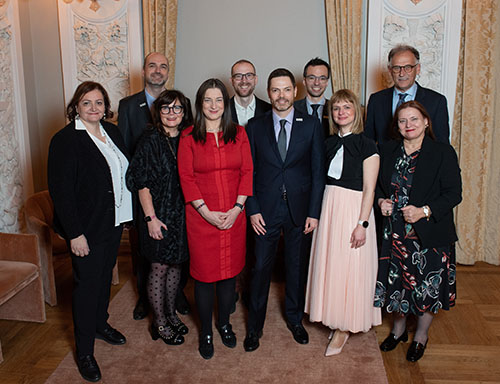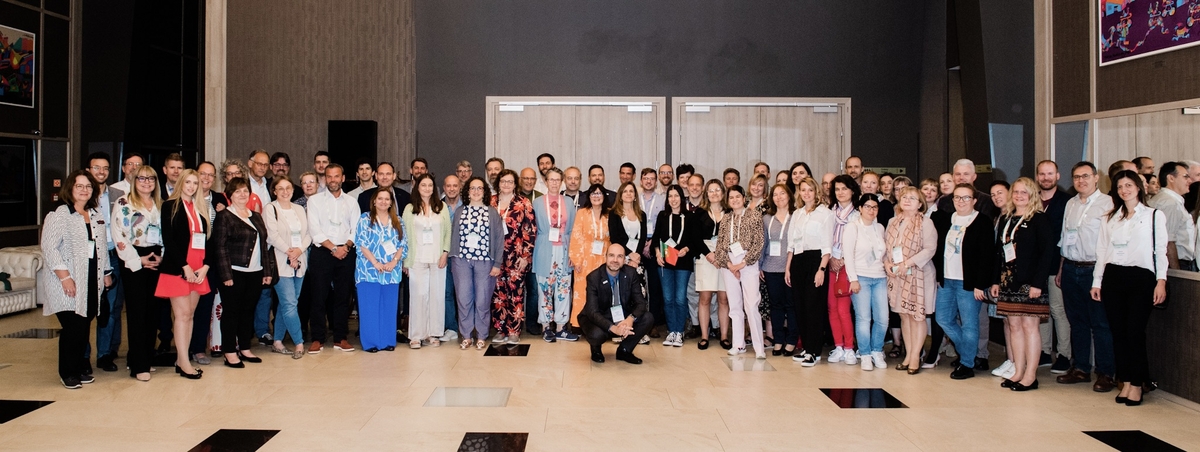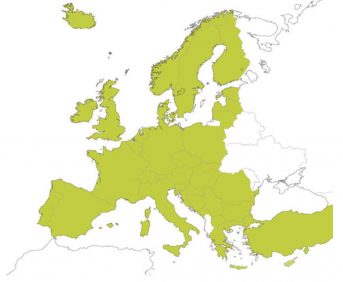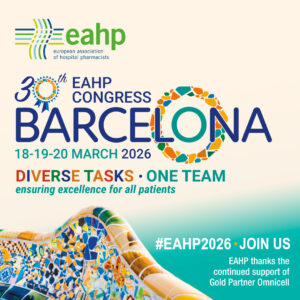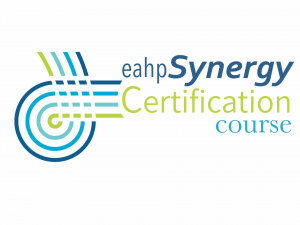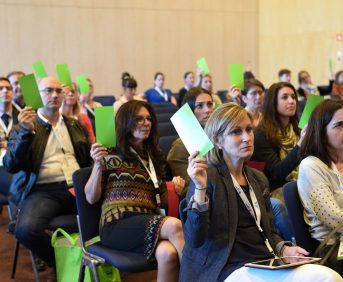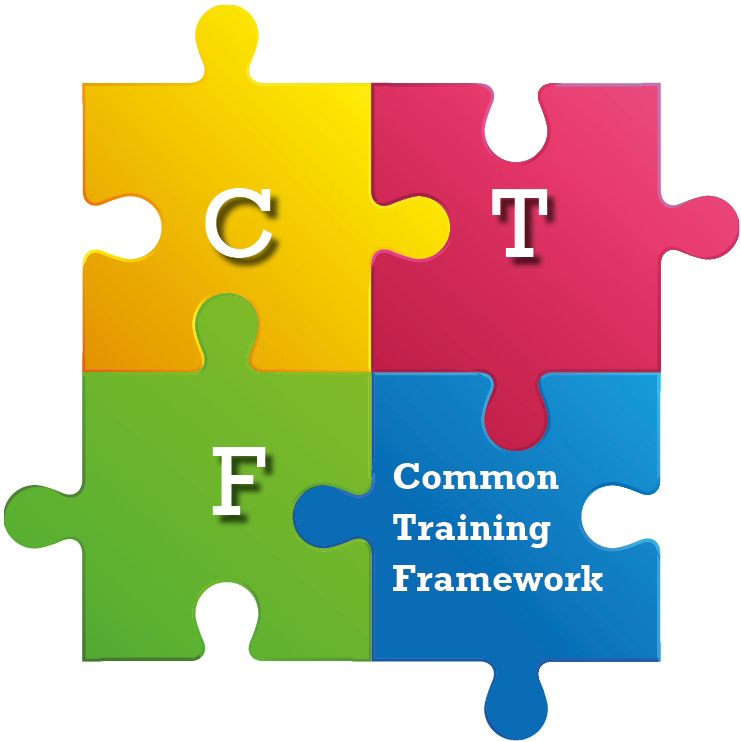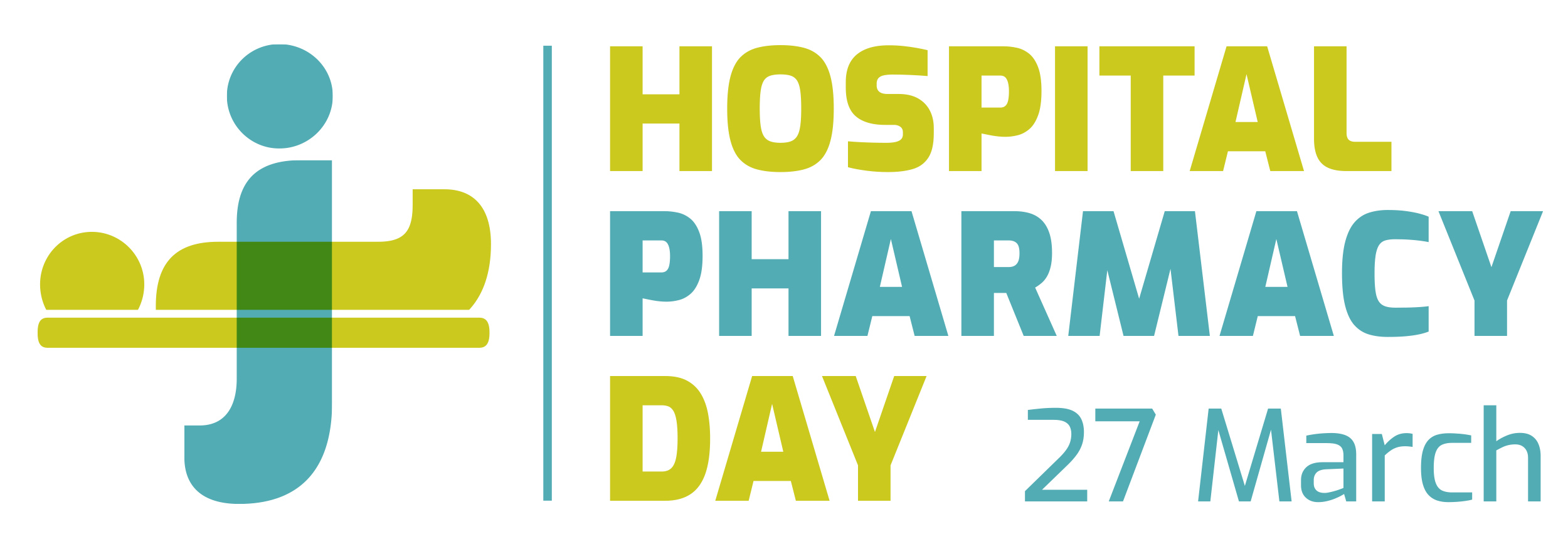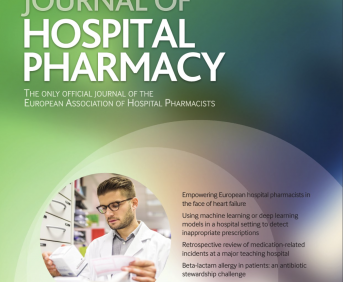PHARMACISTS ROLE IN THE DEVELOPMENT OF A THERAPEUTIC PATIENT EDUCATION (TPE) PROGRAM BASED ON THE DIRECT ACTING ANTIVIRALS (DAA) USED IN CHRONIC HEPATITIS C TREATMENT.
Pdf

European Statement
Clinical Pharmacy Services
Why was it done?
It is now usual to dispense hepatitis C DAA to outpatients, whose virological success rate is high in the general population. However, subpopulations are at risk of re-infection or noncompliance for which an individualized approach with TPE is required. Role of the pharmacist is to transmit skills for starting and to assist the patient during treatment. SE are sometimes more easily disclosed to pharmacist, thereby allowing to take them into account so that the treatment can be adapted until completion. TPE benefits for these subpopulations are expected in the short term with regards to compliance and empowering the patient during treatment and in the long term to eliminate risky practices and leaving additions.
What was done?
setting up and running TPE sessions for hepatitis C by pharmacists
How was it done?
Hepatology department, based on multidisciplinary team (hepatologist physicians, psychiatrists, addiction specialists, pharmacists, nurses and psychologists), developed a TPE program on viral hepatitis in april 2016. Following written consent, entry into the program was systematically offered to vulnerable patients (background of substance abuse, active alcohol consumption, risk of non-compliance).
Pharmacists were involved in individual sessions concomitantly to DAA dispensing, since the day when patient started TPE program. Pharmaceutical sessions aimed outpatients to acquire following competencies:
– DAA’s name, action mechanism,
– Terms of administration, what to do if forgotten,
– Side effects (SE) and their management,
– Drug interactions (adapted to outpatient treatment).
Pharmacists also answered to questions concerning the patient and monitored compliance and SE.
Interactive practical tools were developed: treatment logbook (also allowed evaluating objectives at each session), cards about known and preconceived SE, timetable for drug intake. Patients fulfilled a satisfaction survey at last session.
What has been achieved?
31 outpatients were included. Pharmacists conducted 65 sessions, 2 or 3 individual meetings per patient (one hour-long total per pharmaceutical session) depending on treatment length (8-24 weeks). 6 patients were still ongoing and 25 achieved the program. Among them, 12 had an undetectable viral load after 12 weeks (Sustained Virological Response 12) and 1 relapsed. 100% of goals were achieved as from the first pharmaceutical session. 100% of patients were satisfied about pharmaceutical session
What next?
Evaluation of program’s benefits in terms of virological success need to be continued.
OPIOID ROTATION IN PEDIATRICS: A CONVERSION CHART FOR CHILDREN OLDER THAN 1 YEAR
Pdf

European Statement
Clinical Pharmacy Services
Author(s)
Sabina Hiltbrunner, Dalibor Panis, Jörg Thomas, Eva Bergsträsser, Angela Caduff Good
Why was it done?
Opioids are widely used for acute pain management in pediatrics after surgery, for sedation on the intensive care unit, and chronic pain management in palliative care and many other conditions. In some patients, it is necessary to change the opioid during therapy, due to tolerance development or due to side effects. Although conversion tables for adults are well established, they are not readily available for pediatric use.
What was done?
To simplify the process of opioid rotation in pediatrics, an opioid conversion chart with easily memorable conversion factors was generated.
How was it done?
A literature search was performed to collect conversion factors and equivalent doses of opioids with different application routes. We searched specifically for conversion factors in pediatrics. Except for Oxycodone and Remifentanil, for all other opioids in our chart conversion factors for pediatric patients were found. Data for adults were used for these two substances. For all conversion factors experts confirmed their adequacy for clinical use in pediatrics. The conversion factors were rounded up to whole numbers, which was considered reasonably based on long-term experience in pediatric pain manage-ment.
What has been achieved?
This conversion chart is now part of a drug information document about opioid dosing in children older than 1 year in our hospital. For every substance, starting doses were set according to www.pediatric-dosages.ch and based on clinical experience. When necessary, details about the therapy with the indi-vidual substance were added. For illustration purposes, a sample calculation of the change from oral Morphine to oral Oxycodone was included.
The immature metabolism in children younger than 1 year makes the opioid action often unpredictable. Therefore we restrict the use of the chart for children older than 1 year and in younger children specialists in pain management should be consulted.
What next?
Our opioid conversion chart, with easily memorable conversion factors and starting doses, supports all healthcare professionals in pediatric pain management and may also help to reduce critical incidences due to mistakes in calculation. This is the first time an opioid conversion chart is established for pediatric purpose. Its impact on patient safety has to be shown in the future.
IMPLEMENTATION OF GUIDELINES FOR THE ACTIVATION OF EFFECTIVE ANTIBIOTICS’ STEWARDSHIP TEAM IN GREEK HOSPITALS – THE ROLE OF HOSPITAL PHARMACIST
Pdf

European Statement
Clinical Pharmacy Services
Author(s)
Antonios Markogiannakis, Georgios Pegkas, Calliope Allagianni, Stavroula Efstathiou, Despoina Makridaki
Why was it done?
The term of AST has been introduced in Greek legislation since 2014 and should become the driving force to optimize antimicrobial therapy, especially for the protected antibiotics (PA): carbapenems, colistin and tigecycline. Unfortunately Greece ranks first in Europe in the consumption of the mentioned PA in hospitals, consequently the activation of AST constitutes national priority. The existing law frame defines that AST consists of four key member physicians (experienced in infectious diseases) plus the hospital pharmacist as coordinator of the group. As the number of serving pharmacists in Greece remains critically low, very few hospitals have actually activated the AST. The Panhellenic Association of Hospital Pharmacists (PEFNI) decided to organize regional meetings to enhance the involvement of pharmacists by sharing the practice of experienced colleagues running antibiotic stewardship programs (ASP) in their hospitals since fall of 2016.
What was done?
We have described the sequential steps for the establishment of multidisciplinary Antibiotic Stewardship Team (AST) in Greek hospitals and prepared training material to increase involvement of hospital pharmacists.
How was it done?
We combined the strategies and procedures implemented in the three hospitals during last year, in a flowchart presenting the establishment, activation and feedback of the AST. We have developed an ASP for hospitals, with initial target to minimize the use of PA:. Functional options in each step have been described, making it flexible for the colleagues to selectively implement them in their hospitals. We also created specific educational material to use in regional meetings that PEFNI organizes.
What has been achieved?
The application of ASP and the education of hospital pharmacists as coordinators results in: • Reliable reporting of controlled use for the PA • Safer antimicrobial management practice • Economy on restricted pharmacotherapy budgets • Acknowledgement of the critical role of pharmacists by other healthcare professionals, the hospital manager and the authorities
What next?
• The basic flowchart can be broadened to include subsequent stewardship activities such as recording proper surveillance of more classes of antibiotics, assessment of antimicrobial surgical chemoprophylaxis and/or antifungal pharmacotherapy.
• Connection of local ASP reports to a national network for all hospitals will help towards the creation of a real-time antibiotics’ consumption database in Greece.
IMPLEMENTATION OF THE FIRST MEDICINES INFORMATION SERVICE IN BELGIUM
Pdf

European Statement
Clinical Pharmacy Services
Author(s)
Elise Deyaert, Hilde Collier, Pieter-Jan Cortoos, Claudine Ligneel
Why was it done?
Medication errors are often caused by insufficient knowledge among healthcare professionals. Given limited clinical pharmacists’ presence on Belgian hospital wards, a pharmacy-led MIS can efficiently provide fast, accurate and objective medication-related information.
What was done?
We implemented the first Belgian Medicines Information Service (MIS) in our university hospital. In several countries, a MIS is common in most hospitals but until our project, no such MIS was available
in Belgian hospitals.
How was it done?
Best practices were researched through literature review and site visit at Charing Cross Hospital (London, UK). Secondly, in order to customize activities, all nurses and physicians were surveyed on medicines information needs. Our MIS was set up to centrally (1 dedicated pharmacist, phone number and e-mail address) receive medication-related questions from healthcare workers with the option to request additional clinical-pharmaceutical interventions (e.g. drug review). Implementation was accompanied by mailings, posters, business cards and presentations. All enquiries were registered in the MiDatabank® (UKMi National Medicines Information) and evaluated after 4 months, together with user satisfaction.
What has been achieved?
221 respondents (113 physicians, 103 nursing) to our survey found ‘drug administration/dosing’ (79.7%), interactions (69.6%) and ‘tablet crushing’ (49.7%) major problematic topics. Physicians rated the MIS to be useful for drug review, counselling and interactions while nursing preferred support on drug administration and tablet crushing. 96.8% intended to use the MIS.
Between 09/01 and 09/05/2017, our MIS received 247 enquiries (45.5% residents, 34.0% nursing, 13.8% clinical staff). Drug administration/dose-related questions (43.3%) was the most important category, followed by drug choice/indication (10.5%) and interactions (9.7%). 80.2% were answered within 1 hour (median: 11min). 81% of users mentioned the MIS improving their knowledge, with 59% and 56% reporting positive patient outcomes and time savings. Our MIS scored high on accessibility, timeliness, comprehensiveness and quality (average 4.34, 4.29, 4.42 and 4.47 on 5-point scale). MIS activity corresponded to 0.4FTE pharmacist with an average cost of €15.4/enquiry.
What next?
Our project shows that fast and reliable medication-related information is greatly needed. For the future, this service should be organized with other hospitals as to optimally use resources, share information and increase expertise. Also providing such service to primary care and patients will have be explored.
ESTABLISHING AN ACTIVE WORKING GROUP FOR PHARMACISTS WORKING WITHIN PAEDIATRIC ONCOLOGY AND HAEMATOLOGY IN SWEDEN, FINLAND, NORWAY AND DENMARK
Pdf

European Statement
Clinical Pharmacy Services
Author(s)
Ranaa El Edelbi, Joacim Götesson, Sanna Veijalainen, Mari Vanhatalo, Taija Heikkinen, Ulla Taipale, Gunn-Therese Lund Sørland, Margrete Einen, Magnus Dahlander
Why was it done?
There is a great need for pharmaceutical expertise within the field of pediatric oncology and hematology, where chemotherapeutic regimens and supportive therapy often require intense treatment with drugs from many therapeutic groups. The complex drug environment created requires competence in diverse pharmaceutical subjects and many centers of pediatric oncology and hematology within NOPHO has concluded that hiring a pharmacist can cover the perceived knowledge gap and also increase the quality of the drug treatment. However, working as a single clinical pharmacist in a very specialized hospital setting such as pediatric oncology and hematology can be very difficult and time-consuming as everything depends on your own knowledge and experience. In most pediatric oncology and hematology centers it is not feasible to have more than one pharmacist and thus collaboration and discussion between different hospitals and countries are necessary.
What was done?
A working group for pharmacists was established within the Nordic Society of Paediatric Haematology and Oncology (NOPHO).
How was it done?
The need for a group of pharmacists working within pediatric oncology and hematology was raised by pharmacist Ranaa El Edelbi at Astrid Lindgren’s Children’s Hospital, Stockholm, during the autumn of 2014. She sent out an email to all the pediatric oncology and hematology centers within NOPHO and asked if they had any pharmacists involved in the care setting. She got a positive reply from a few centers and invited the pharmacists for at first meeting in Stockholm in November 2014 and a working group for pharmacists with NOPHO was created in early 2015. The network has since then grown to 17 pharmacists from 4 countries and 10 centers.
What has been achieved?
An active working group with regular email discussions as well as Skype and physical meeting to facilitate the exchange of knowledge and experience. The group has also undertaken and finished a project to develop a guideline for extravasation of chemotherapeutic drugs, which was published in December 2016.
What next?
Developing a guideline for safe and accurate administration of oral chemotherapeutic drugs to children.
INTRODUCING A CLINICAL PHARMACY SERVICE INTO THE HOSPITAL EMERGENCY DEPARTMENT AT THE WEEKEND
European Statement
Clinical Pharmacy Services
Author(s)
Roisin O’Hare, Andrew Dawson, Natasha Beattie, Eva McRory, Jayne Agnew, Sara Laird, Tracey Boyce, Victoria McConville
Why was it done?
In November 2016, regional funding was provided to all of the Trusts in order to improve medicines reconciliation rates within 24 hours of admission. The weekend clinical pharmacy service to the emergency department was established from 1st December 2016.
The aim of this project was to examine the impact of a clinical pharmacist led weekend service on to the Emergency Department in xxxxxxx.
Objectives
To determine the number of medication histories and medicines reconciliation completed within 24hrs of patient admission
To evaluate the type and signficance of pharmacy interventions identified
To record the number of medications prescribed by the pharmacist.
What was done?
A pharmacy service to optimise medicines use and pharmaceutical care for patients in the emergency department at the weekend was established.
How was it done?
We conducted a literature review on the existing clinical pharmacy services to ED. We used an Agile methodology. We established a core stakeholder group to develop a vision and a plan for the project. We used an Agile methodology with Plan Do Study Act (PDSA) with weekly ‘scrums’ and 6-8 weekly sprint meetings. We developed a data collection form to collate quantitative data; including the number of; patients reviewed by the pharmacy team, medication histories completed, medicines reconciliation completed within 24hrs of admission, pharmacist interventions, medications prescribed by the pharmacist.
What has been achieved?
We demonstrated an increase in the number of patients reviewed per day since December (average of 10) to June (average of 12). We increased the Medicines Reconciliation rate in the ED in xxxxxxx within 24hrs of admission from 0% in Nov 2016 to ~60% in Dec 2016 and ~80% in August 2017. The Pharmacy Team made on average 4.5 interventions (range 3-6) per patient reviewed (an average of 45 interventions per day). Prescribing by pharmacists demonstrated an increase in the number of medications prescribed per patient; December (0) and August (4).
What next?
The pharmacist interventions directly improved patient safety and care. Staff in the ED have anecdotally praised the service to the Pharmacy Team and have increasingly accessed the knowledge of the pharmacist at the weekend to address medication-related problems. We believe that we shaped an approach to clinical pharmacy practice in the ED which could be shared across the Trust and further across the country.
References:
1. Medicines Optimisation, the safe and effective use of medicines. Available from: http://www.nice.org.uk/guidance/ng5 Accessed on 13th October 2017.
2. Eadon H. Assessing the quality of ward pharmacists’ interventions. Int J Pharm Practice. 1992;1:145–7.
Acknowledgements:
We would like to acknowledge the work of the entire clinical pharmacy and clinical pharmacy technician staff at xxxxxxx who provide this service to the ED at the weekend and who tirelessly collected the data for this project.
A FRACTURE LIAISON SERVICE COORDINATED BY CLINICAL PHARMACISTS
Pdf

European Statement
Clinical Pharmacy Services
Author(s)
Gösta Lööf, Malin Kuno Edvardson, Jessica Loayza, Louise Furubom
Why was it done?
According to national guidelines, 60-70% of women >50 years with a fragility fracture should receive treatment to prevent further consequences of osteoporosis. In Sörmland, only about 16% of eligible patients received such treatment in 2015. To increase this number it was decided to start a coordinator-based FLS. CPs were chosen as coordinators since they were already integrated members of the health-care team at the clinic, conducing medication reviews, with the required competence to assess patients and suggest suitable medication therapy for osteoporosis.
What was done?
By initiative of the county task force for osteoporosis in the county of Sörmland, Sweden, a project with a fracture liaison service (FLS) with clinical pharmacists (CPs) as coordinators was developed in collaboration with the orthopedic clinic at one of the region´s hospital; Mälarsjukhuset.
How was it done?
The project was initiated in December 2015. The CPs were given permission to send electronic referrals to DXA to be performed and to the general practitioners (GPs) for further investigation and initiation of treatment for osteoporosis. The CPs identified eligible patients at the orthopedic ward and at the emergency department (ED). The CPs visited and interviewed patients treated at the ward while patients treated at the ED instead received a phone call or a letter, to get information regarding their risk factors. Thereafter the CPs decided how to proceed; referral to DXA, referral to a GP or no further investigation or actions. For patients treated at the ward, the CPs would discuss their findings with the orthopedist on duty.
What has been achieved?
For patients included from December 2017 to October 2016, the percentage of who received treatment has raised to at least 25%. For about 50% of the patients, a full year has not yet passed since the date of fracture so the result may still improve. According to two small surveys, the orthopedists and the GPs are very positive to the new service and want it to continue.
What next?
Because of the success, the service will be permanented and implemented thoroughout the county. Opportunities to further improve FLS have been identified continuously and changes made accordingly to reach the goal of 60-70% treated patients.
LET’S DIVERSIFY TO GUARANTEE ACCESS TO THE HOSPITAL PHARMACIST’S EXPERTISE: ALL GOOD THINGS COME IN FOURS!
Pdf

European Statement
Clinical Pharmacy Services
Author(s)
Maria Kundracikova, Petra Pölzleitner, Katharina Ocko, Bernadette Aretin, Barbara Datterl, Klara Jadrna, Eva-Luise Hobl, Martin Holbik, Sonja Steininger-Salmer, Helga Fend, Gerda Laml-Wallner, Martina Anditsch, Gunar Stemer
Why was it done?
Due to limited human ressources (8 FTE) in the medicines information and clinical pharmacy department only selected wards could be provided with daily clinical pharmacists’ presence offering medication review, patient discharge counselling and ward round participation. To expand the reach of our clinical services, two further service pillars were introduced complementing the already existing services.
What was done?
The Vienna General Hospital is a 1900 bed university hospital in which patients and health care professionals have access to hospital pharmacists’ expertise via various channels. In addition to already existing services (i.e. provision of hospital-wide medicines information and clinical pharmacy services on particularly selected wards) two new services (i.e. e-pharmacy consult and a dedicated drug interactions and pharmacotherapy clinic) have recently been implemented.
How was it done?
As ward services are staff-intensive, alternatives to expand the access of patients and health care professionals to the hospital pharmacists’ expertise were examined. An e-pharmacy consult was designed, implemented, and promoted in collaboration with the hospital IT department. E-consults can electronically be requested by all wards (e.g. for medication review, patient counselling), but mainly aim at those areas which are not regularly covered by a clinical pharmacist. E-consults are executed by the medicines information pharmacist on duty. Recently, a special clinic was implemented as a collaborative project with the clinical pharmacology department addressing the specific medicines-related needs of patients with complex medication regimens.
What has been achieved?
The scope of services provided by the department currently comprises four pillars: (1) provision of medicines information (2016: 1.200 requests), (2) clinical pharmacy services (2016: 9.000 medication-related problems prevented), (3) pharmacy e-consults, and (4) the drug interactions and pharmacotherapy clinic. While the scope and reach of services was expanded by diversification, the two new services are operated with existing ressources after reassignment of tasks.
What next?
After the implementation of new services (i.e. e-consult, clinic) constant promotion is needed to increase the awareness level among health care professionals in the hospital. Quality assurance and continuity of service provision is crucial for acceptance.
PREPARATION OF A COMPATIBILITY CHART IN “Y” FOR AREAS OF CRITICALLY ILL PATIENTS
European Statement
Clinical Pharmacy Services
Author(s)
Gregorio Romero Candel, Esther Domingo Chiva, Laura Rodenas Herraez, Cristina Urbano, Jose Marco del Rio, Nieves Cuenca Cano, Maria Jesus Sanchez Cuenca, Antonio Sanz Arrufat, Ana Valladolid Wals, Angel Escudero Jimenez
Why was it done?
In the areas of critically ill patients such as emergency, intensive care and resuscitation, the use of intravenous drugs (IV) in “Y” are common in clinical practice. Stability and physical-chemical compatibility of IV drugs admistered in “Y” are important, affecting directly the safety of patients and the therapeutic efficacy of medicines, which can lead to medication errors (ME). A quick reference chart was developed in order to facilitate the administration of these drugs and reduce errors in these areas.
What was done?
A chart for quick reference of compatibility of drugs in “Y” for the most commonly used drugs in the areas of critically ill patients of our hospital.
How was it done?
It was a team composed of a doctor specializing in emergency medicine, a nurse and two hospital pharmacists. Economic management of pharmacy program Farmatools® was used to obtain the list of drugs most consumed and those most relevant and specific of these areas were selected.
A chart was made where the header of the rows and the columns was the list of drugs in the study. Finally, we conducted a systematic research on Micromedex® “Y” compatibility with each drug with the remaining, completed the chart with a visual color code: green (compatible), red (incompatible), white (not tested) and orange (precaution, existence of various stability dilutions and consult your pharmacist).
What has been achieved?
The elaboration and implementation of this table will provide a fast and visual consultation instrument to nurses before the administration of drugs in “Y”. This tool intended to facilitate decision-making, contributing to increase the effectiveness of the drugs and avoid possible adverse reactions in patients, increasing the quality of care and lowering the ME.
What next?
We are still working on the same areas to increase safety in drug therapy in critical care. Currently, that improvement measures that are being developed are: new pharmacotherapeutic protocols specifically for those units: high risk medications perfusion protocols and new safety guidelines.
NATIONAL CONSENSUS ON CORE COMPETENCIES FOR CLINICAL PHARMACISTS IN NORWAY
Pdf

European Statement
Clinical Pharmacy Services
Author(s)
Eliln Trapnes, Nina Carstens, Merethe Nilsen, Solveig Vist, Margareth Wiik, Janne Kutschera Sund
Why was it done?
In 2012 all the regional hospital pharmacy trusts in Norway decided to implement the IMM-model as a national method for clinical pharmacy practice in hospital settings. Although an extensive amount of training and education has been provided locally and regionally, there was a lack of defined core competencies for clinical pharmacists in Norway. Furthermore, a complete post graduate education program for clinical pharmacists did not exist. Based on this, the managements of the regional hospital pharmacy trusts requested defined skills sets and identification of relevant educational needs and opportunities.
What was done?
A joint national overview of core competencies for clinical pharmacists working in Norwegian hospitals has been compiled. Learning objectives have been defined for each of the steps in the Integrated Medicines Management (IMM)-model (Medication Reconciliation, Medication Review, Patient Counseling and Discharge Service). Relevant education opportunities were identified and recommendations on courses, practical training and other educational activities were described.
How was it done?
A group of six experienced clinical pharmacists representing all the hospital pharmacy trusts in Norway agreed upon core competencies needed to perform the main steps in the Integrated Medicines Management (IMM)-model (Medication Reconciliation, Medication Review, Patient Counseling and Discharge Service) in Norwegian hospitals. Existing education opportunities were compared to the defined learning objectives and a recommended time schedule for the training was made.
What has been achieved?
A national consensus on core competencies in clinical pharmacy services has been reached among all hospital pharmacies in Norway. The consensus, including the evaluation and recommendation of educational activities, makes it easier for leaders of clinical pharmacists to decide on which educational activities to prioritize, and for the Universities to know what educational areas they should cover.
What next?
The report with the identified core competencies will be adjusted according to local requirements and implemented in all Norwegian hospital pharmacies. Hopefully, our work will encourage further cooperation on educational activities between regions. An initiative has already started towards Norwegian Universities to try to integrate relevant competencies into the curricula of pharmacists, and this will continue.
